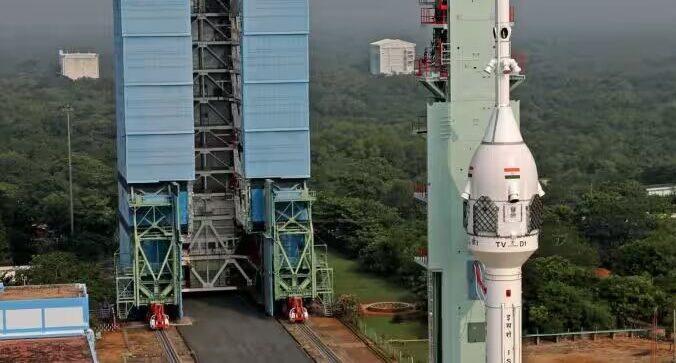According to statements from G Madhavan Nair, the former chief of the Indian Space Research Organisation (ISRO), the successful launch of the unmanned test flight for ‘Mission Gaganyaan’ marked a significant step forward for India’s mission to send humans into space in the near future. Nair expressed his satisfaction with the completion of the TV -D1 mission, emphasizing its importance during an interview.
The test flight, known as Test Vehicle D1 Mission, was primarily aimed at evaluating the crew module’s emergency escape system. Approximately 10 minutes after liftoff, the crew module separated from the thruster and made a gentle landing in the sea. The launch encountered a delay due to adverse weather conditions in Sriharikota, resulting in a postponement of about 40 minutes. Subsequently, the automated launch system initiated an abort command moments before liftoff due to a detected anomaly, leading to a careful analysis of the computer parameters by the ISRO team.
The launch vehicle, as elucidated by Madhavan Nair, is a specialized vehicle centered around the well-established GSLV rocket system, with the flight ascending to an altitude of nearly 10 kilometers and reaching a velocity of 1.2 times the speed of sound. The crew module was ejected from the main vehicle using a set of rocket systems, following a distinct trajectory that ensured a safe landing in the Bay of Bengal. Nair highlighted the seamless execution of the entire sequence, including the separation process and the successful deployment of parachutes, leading to the module’s secure landing in the sea.
While emphasizing the necessity for a detailed investigation into any potential anomalies, Nair underscored the vital role played by the automated launch system in safeguarding the mission from critical issues. ISRO Chief Somanath extended congratulations to the team of scientists for the smooth touchdown of the crew escape module, while Mission Director S Sivakumar hailed the mission as a groundbreaking feat, amalgamating three distinct experiments into a comprehensive demonstration of the system’s capabilities.
The TV-D1 launch sought to achieve several objectives, including the assessment of test vehicle subsystems, the evaluation of the crew escape system, and the demonstration of the crew module’s characteristics and deceleration system at higher altitudes. This mission marks a crucial phase in the ambitious Gaganyaan project, aiming to establish India as the fourth nation to undertake manned spaceflight missions. Additionally, Prime Minister Narendra Modi has outlined ambitious goals for India’s space initiatives, including the establishment of the ‘Bharatiya Antariksha Station’ (Indian Space Station) by 2035 and sending the first Indian to the Moon by 2040, building upon the nation’s recent successes in space exploration, such as the Chandrayan-3 and Aditya L1 missions.
Also Read: Two US hostages released by Hamas amid conflict, IDF confirms
Catch all the Latest Business News, Breaking News Events, and Latest News Updates on NewsX























